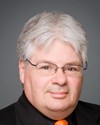Thank you, Mr. Chair.
I'll try to answer this in a straightforward manner, although sometimes it gets a little bit complicated. The reality today is that most of our systems are interconnected, because departments communicate with each other. Our purpose now, through a number of initiatives that we've worked on with Public Safety and with CSEC, is to in fact establish a much more solid foundation upon which to move forward.
By way of example, in the past two years, we've created a thing called SCNet, which is a singular way for the government to connect to the Internet. Most of the departments in the Government of Canada now use that as the means by which they connect to the Internet.
By doing it that way, as opposed to having multiple departments with multiple different connection points, we can now establish monitoring and sensing to see what's actually going on. Our colleagues at CSEC are extraordinarily adept at determining whether or not there are inappropriate behaviours and that sort of thing going on. Because of this sensing and the way we've done it, we're now much more capable of actually determining whether or not things are appropriate. That's one example.
Building on that same example, in reference to the supplementary (C)s discussion around this year, we are now going to take that same framework around SCNet and build another Internet connection, but outside of the Ottawa area, because everything is concentrated in Ottawa. That's a secondary thing that we're going to do.
There's a third thing we're going to do when things happen. Prior to the creation of SSC, there were information protection centres. We had approximately 20 of these in various departments. When something went wrong, CSEC would determine it because of its sensing capability, but then it had to coordinate across all these information protection centres to mitigate any of the things that were going on or not happening properly. One of our responsibilities now is to actually consolidate all those information protection centres into a single centre so it's easier to coordinate when things go bump in the night and that sort of thing. Then we want to build a second centre to back that one up.
Those are examples of how we're progressing.




